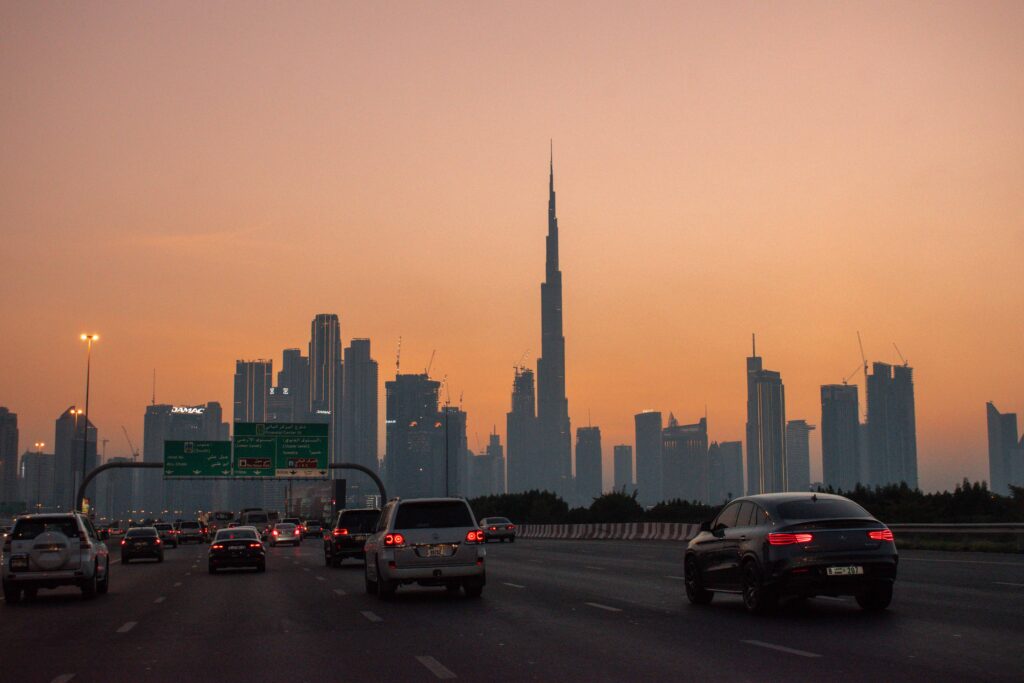
Whilst I had flown through Dubai on many occasions, it had never appealed to me as a destination in its own right until I moved to Oman. It is now a straightforward five hour drive away and is a popular weekend destination for Muscat’s residents.
I had the impression that Dubai was little more than a collection of gleaming skyscrapers, and impersonal marble hotels in the middle of the desert. But we ended up enjoying our Dubai visits much more than we expected. Yes, it is full on. Yes, it is bling. And yes, it is a bastion of excess. But if you know where to look, it is also a mixture of diverse cultures, cuisines and quirky artwork and shops.
Dubai is a good base for exploring not only the rest of the UAE, but also the wider Gulf region given the mega transport hub that is DBX airport. If you are only able to do a short lay over, Dubai offers an easy introduction to the Arabian Peninsula. There can’t be many places in the world where you can swim in warm seas before breakfast, wander narrow alleyways of a buzzing souq after a lunch in a world class restaurant, and then watch the sun set over sand dunes, all within the same day.
I was initially hesitant about writing a guide to Dubai – there are just simply so many already out there, I wasn’t sure what I could add. But when we first visited Dubai, although I found lots of guides to a luxury weekend away, or tips for an ultra-budget backpacking style trip, I found it harder to find recommendations for something in the middle. I was looking for a blend of both the high end, ultra-modern side of Dubai life with a lower key, relaxing weekend experience that wouldn’t bankrupt us but equally didn’t require us to slum it! Hopefully this guide – and my guide to my favourite places to eat in Dubai – will help plug this gap, and offer you a bit of help in seeing both sides of this metropolis.
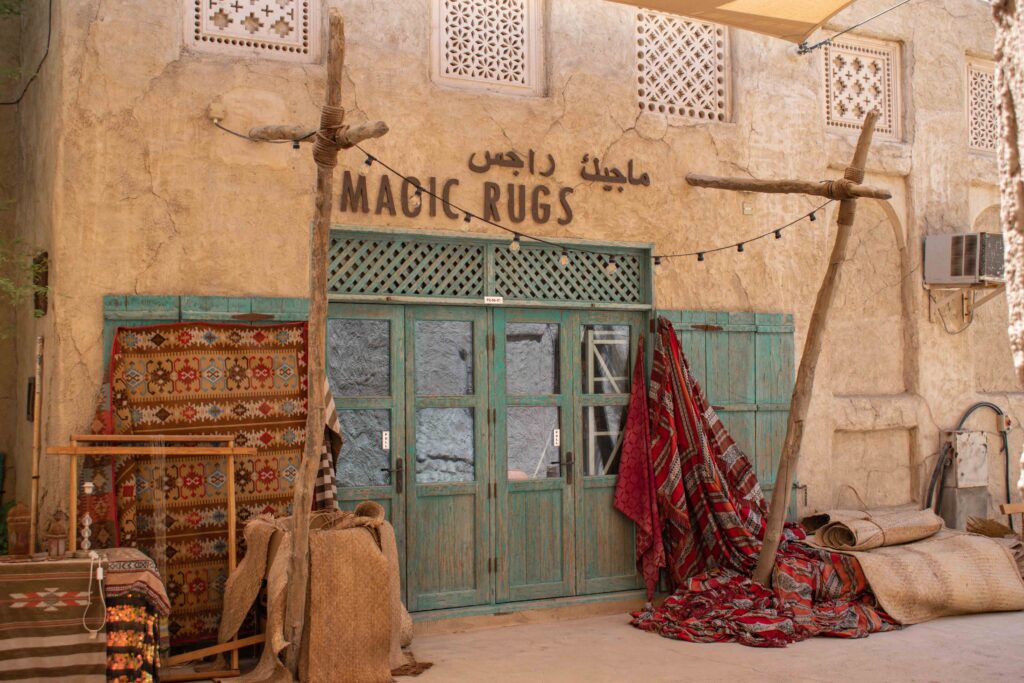
Don’t Miss
The Food – from the ultra high end, to the tiniest holes in the wall. The UAE’s population is about 85% expat, all of whom have brought their own foodie cultures to Dubai offering a chance to sample amazing, authentic cuisines from all around the world in one place.
The Desert – the Rub’ al Khali – more often known to English speakers as the Empty Quarter – is right on the city’s doorstep. Even if you are only here for a short layover, get a glimpse of the sprawling dunes.
The Views – Burj Khalifa might be most iconic, but I prefer views of Dubai’s best architecture that include the Burj. Favourites are the Taj Hotel bar for a cocktail with a view, or if you prefer to keep your feet firmly on the ground, head to Dubai Creek at sunset for panoramic views of the skyline.
The Wildlife – incongruously framed by highways, the Ras Al Khor sanctuary is a stopover for birds migrating from east Africa to west Asia. In the winter, an afternoon flamingo watching offers a totally different Dubai experience.
Need to Know
Language Arabic, English and many others widely spoken
Currency United Arab Emirates dirham (AED)
Nearest Airport Dubai (DXB)
Getting Around Taxi, Hire Car, Metro or Bus
Staying In Touch Tourists over age 18 can get a free Tourism SIM from DBX immigration, offering three-minutes talk time and 20MB mobile data. This can be topped up at any Du kiosk. Other local operators – Etisalat and Virgin – also have kiosks at the airport offering prepaid SIMs. Free public WiFi widely available.
Weather – daytime temperatures are consistently a comfortable 25°C (77°F) in the winter months of November to March, whilst evenings drop a few degrees cooler. This is peak tourist season so sights will be more crowded and accommodation pricier. By June/July, the city is usually well into the 40°Cs (100°F +) and extremely humid. Although prices will be lower, anything outside will be utterly off limits and some events will be shut.
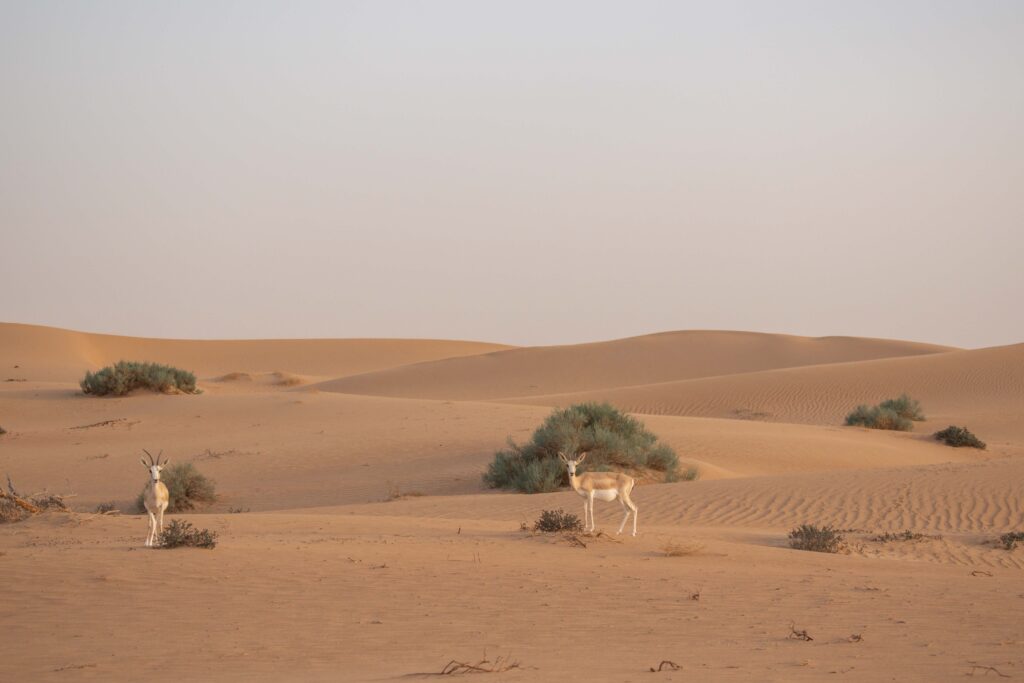
GETTING THERE
There are two main airports in Dubai. Dubai International Airport (DXB) and Al Maktoum International Airport (DWC). Most airlines fly into DXB, right in the city centre. DWC however, is actually closer to Abu Dhabi than to Dubai so be sure to check your ticket carefully! Transfers between the two cities are actually fairly straightforward and affordable, so if flight prices are much cheaper, do not immediately discount this as an option. The bus to Dubai from Abu Dhabi should cost around 25 AED (£5) whilst a taxi will cost approximately 250-300 AED (£51-61). The drive takes about 90 minutes.
GETTING AROUND
One glance at Dubai will tell you that it is a city designed for cars! Although hire and insurance costs can be pricey, petrol prices are very low in the UAE (and across The Gulf). Except to pay around 220 AED (£45) per day for a standard rental car. Parking is widely available in Dubai, and often free.
Taxis are cheap in Dubai. From Deira to Downtown Dubai, you can expect to spend around £13/$16 one-way. But it can be tricky to get to less well known areas. Most taxi drivers know a lot of the hotels and malls, but residents tend use landmarks rather than addresses to give directions to other locations. Google Maps will be your friend! Taxis don’t always accept card payments, so carry cash. Dubai is well served by Uber, and its Middle Eastern counterpart, Careem. Prices between these apps, and standard taxis, are broadly the same. Taxis with pink painted roofs are reserved for women.
Dubai has a fairly good, air-conditioned metro and bus system. The metro operates across two lines – red and green. Whilst these lines join up most of the main areas of the city, the main attractions can often be a fair walk from the nearest station. So you may need to combine a metro and a bus journey to get to your destination. The RTA journey planner is a handy tool for planning bus journeys. If you plan to take several journeys on the bus and metro, you will want to buy a rechargeable RTA NOL card – not unlike London’s Oyster cards. You can do this at any metro station, but they are not sold at bus stations. Metros are made up of five carriages, with the first divided into two sections – first class (“Gold”) at the front and the second half reserved for women and children. The rest of the carriages are standard class.
A single air conditioned tramline runs 11 stops on a loop from Dubai Marina, and connects with both the metro system and the Palm Monorail. Sit up front for a wonderful view. It runs daily from 6:30am until 1am, except Friday when service starts at 9am. Tickets are a flat rate of 3AED – a NOL card is needed.
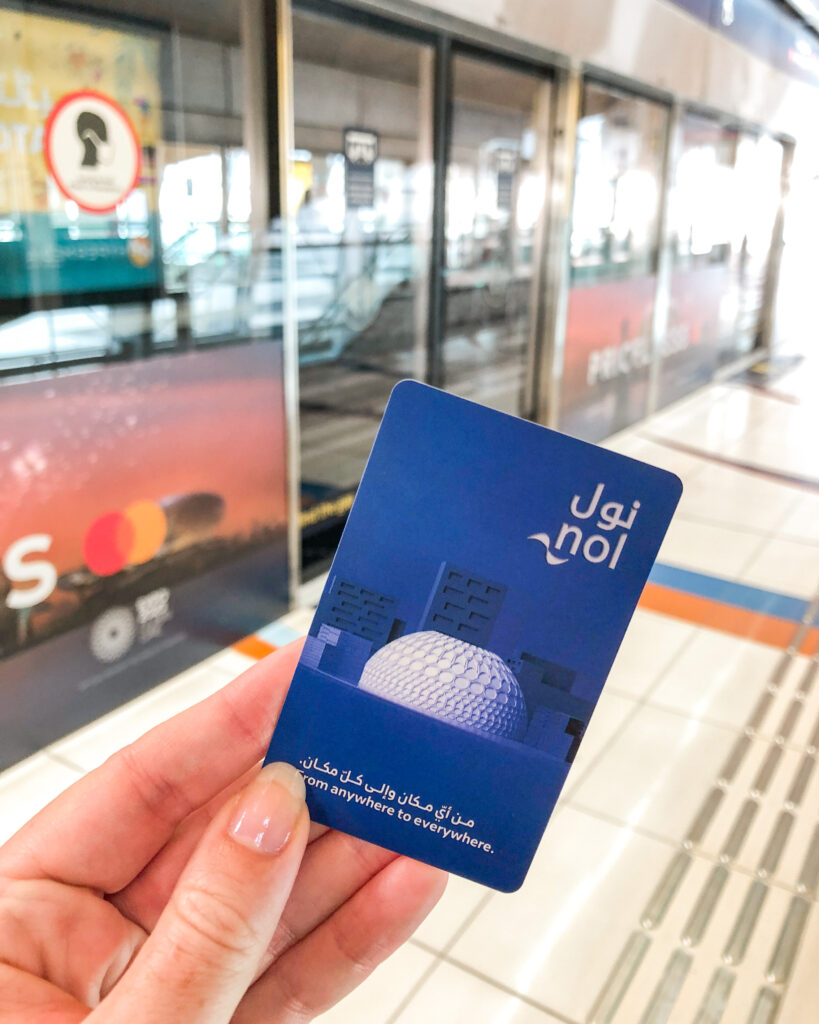
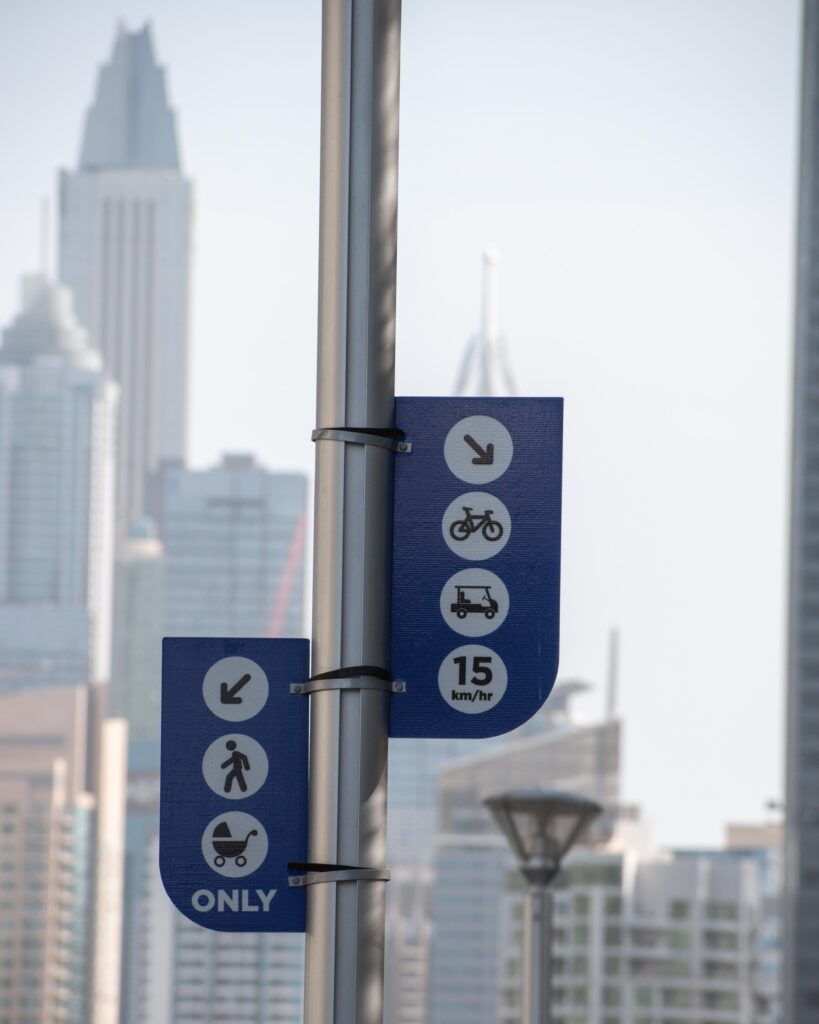
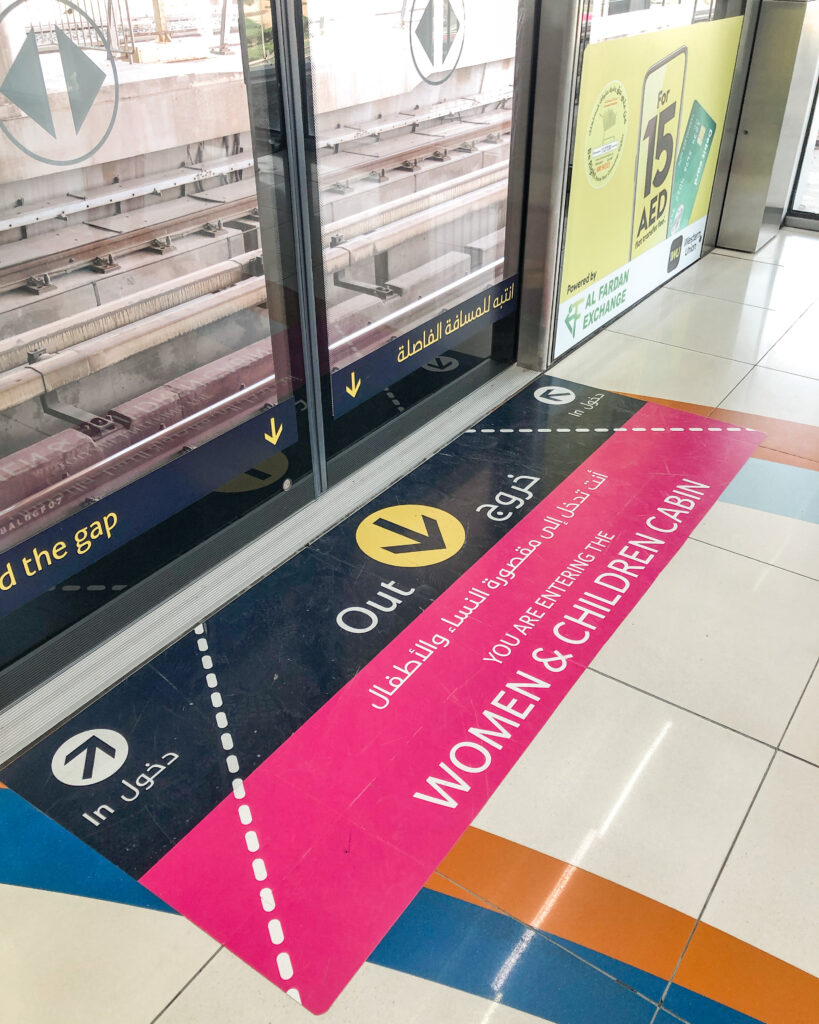
DUBAI ON A BUDGET
Dubai can very expensive, and there is no getting around the fact it is a luxury destination. However, there are certainly ways to save some money and see the city without completely breaking the bank.
There are several recommendations below for affordable places to eat, but if you are travelling with friends, as a family or staying in Dubai for more than a few days you may want to get The Entertainer. Valid for a year, it offers discounts – usually 2 for 1 – on hundreds of restaurants, bars and activities. The basic Dubai membership costs 365 AED (£75), so you may find you cover the cost in just a short visit. If you want to save money on alcohol, Guzzle is the app for you. It offers 2 for 1 offers on drinks at a large number of restaurants. The app is free.
Check out Time Out Dubai and What’s On Dubai for details of free events and activities and ask your hotel about whether they have any deals with attractions and local restaurants. For example, the Al Seef Hotel offers a 30% discount on several theme parks if you stay with them. Many hotels also have free shuffle to the malls and main tourist sights.
Finally, you will find prices – especially for hotels – are drastically cheaper in the summer months. It can therefore be tempting to book a trip in the hotter months if you want to save some money. However, I would recommend against this as many attractions will be shut, and frankly, its pretty grim having to dash from air-conditioned building to air-conditioned building to avoid the oppressive heat! You might save money, but you are unlikely to see the best sights or enjoy your trip as much.
DUBAI’S AREAS
Zabeel – aka Downtown – close to top attractions and pedestrian-friendly. The palm tree lined pavements are lit up at night making for a lovely place to stroll once the sun has gone down. But beware, the closer you are to Downtown, the more expensive everything gets.
Jebel Ali District – aka Dubai Marina – views of the famous skyline and the yacht filled marina. The boardwalk along the beach is a lovely place to come to eat at night. However, it is also very crowded with traffic. Not least due to the Dubai Tram – a fun way to get around, but very slow. And super frustrating if you are trying to drive!
Jumeirah District – the main residential area of the city centre, and the closest to the beach. Transport is more limited than elsewhere, so you will need to get a bus or drive to Sheikh Zayed Road and get on the metro.
Deira District – the oldest area in Dubai, this was the original trading settlement. Home to the Dubai Museum it is the most historic, and affordable, area of the city. Dubai has a seriously well-deserved reputation for being a shopper’s paradise, and this is the centre! Not for flashy malls but for the wonderful souqs where you can pick up the most gorgeous souvenirs of your Middle Eastern jaunt at great prices.
Bur Dubai/Al Karma area – where you will find the hip crowd! Quirky cafes, with super food. Lots of cool graffiti and street art.

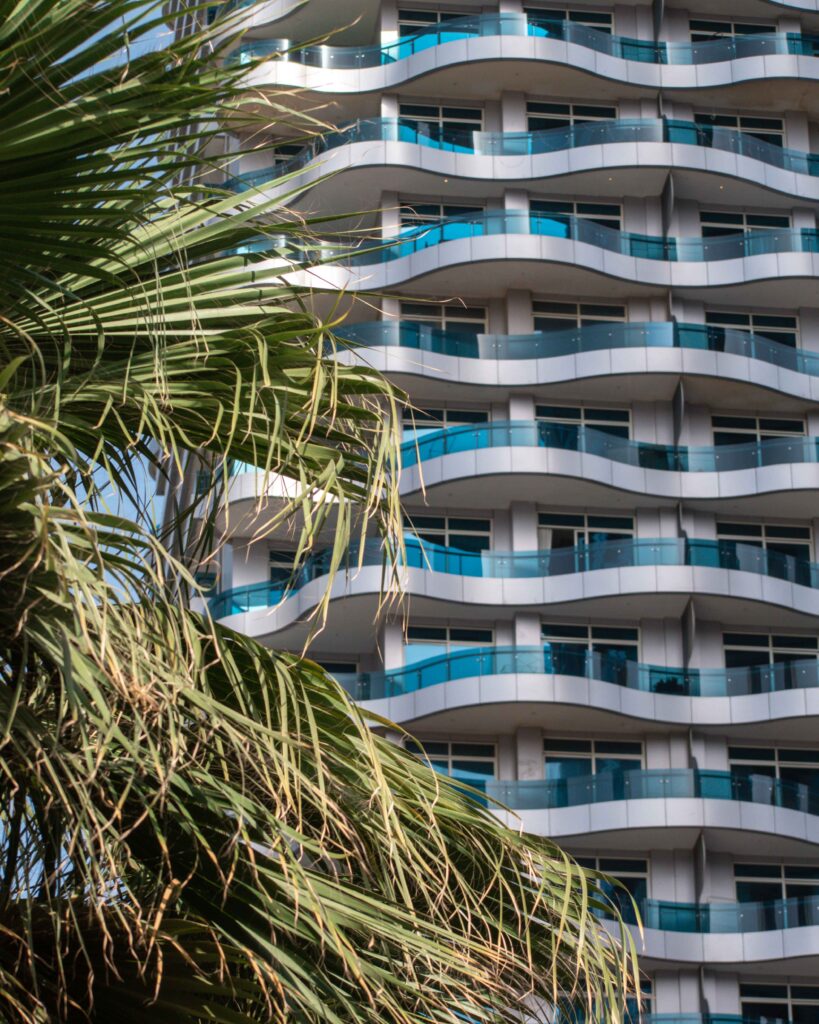
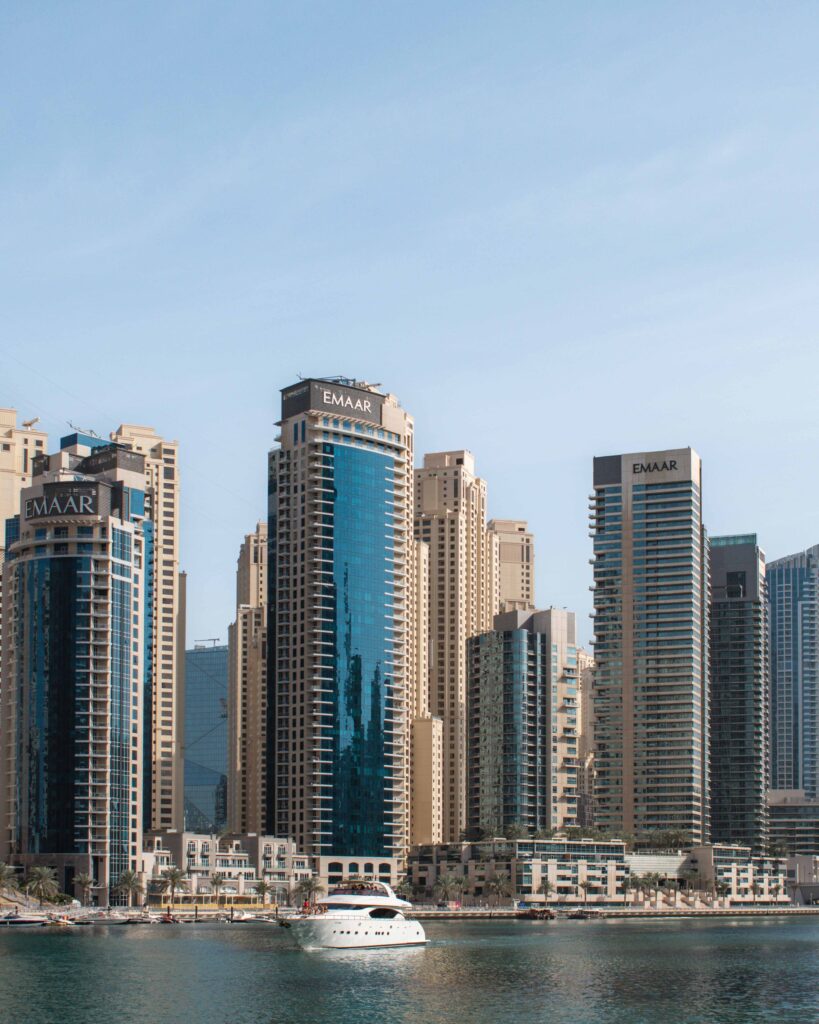
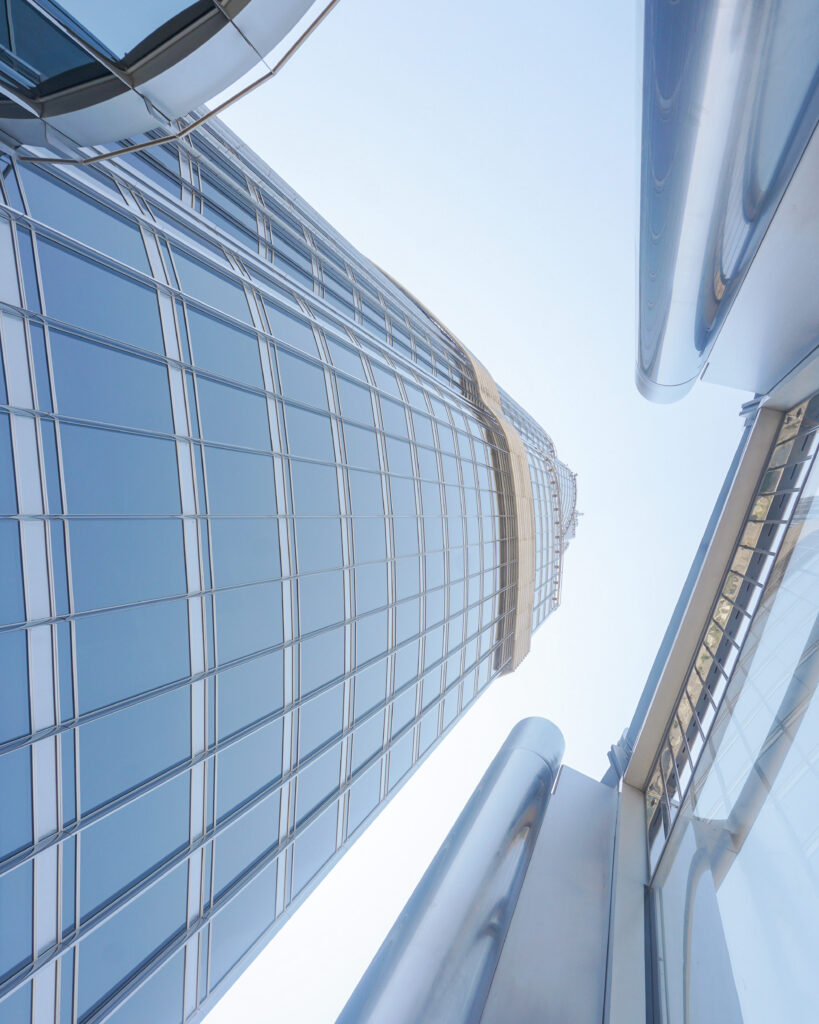
THE “TOP” DUBAI SIGHTS
I think there is a risk that some of the “alternative guides” to Dubai can reduce the city to something rather one dimensional. Some can ignore the fact that cutting edge Dubai is now as much as part of the UAE’s culture as evenings in the desert learning about Bedouin tradition. As with all countries, the UAE is a mixture of old and new, and its culture continuously evolving. So for me, the perfect Dubai itinerary is one that throws you into the famous, superlative nature of this colossal city, alongside the more laid back options set out in more detail in the rest of this guide.
Burj Khalifa – a spectacular feat of engineering sends the world’s tallest building a terrifying 828m into the air! The “At The Top” observation decks on the 124th and 148th floors, and a restaurant-bar on the 122nd allow you to get amongst the clouds. Prices vary depending on the season and time of day, starting at 149 AED (£30). Tickets book out quickly so buy online in advance. Just be aware that there really is no point paying the large sum to go up on a hazy day – you will see absolutely nothing!
The Fountains – I was initially a bit nonplussed by the free fountain show, but was really surprised by how beautiful it was once we saw it! Accompanied by classical music, jets of water soar 140m against the backdrop of the twinkling lights of the Burj Khalifa. Shows are every half an hour from 6pm until midnight. For the best views, with slightly fewer crowds, head to the waterside just outside Souq al Bahar underneath the Time Out Food Market. Even better, get to the market early and snag a seat by the window to watch the fountains with some tasty nibbles and a beverage.
The Beaches – Dubai’s shoreline might be covered with five star resorts, the city still has a plethora of public beaches offering a more purse-friendly way to get your toes in the sand. Kite Beach is my favourite, framed by the Burj Al Arab. There are plenty of gourmet food trucks to keep you from going hungry, and at sunset the skies turn pastel as crowds take to the beach to play sports. Sunset Beach, in Umm Suqueim, is slightly further along but has the same views with fewer people. Between Pearl Jumeira and Jumeira Bay, La Mer is also a fun destination, with lots of good public amenities and food choices.
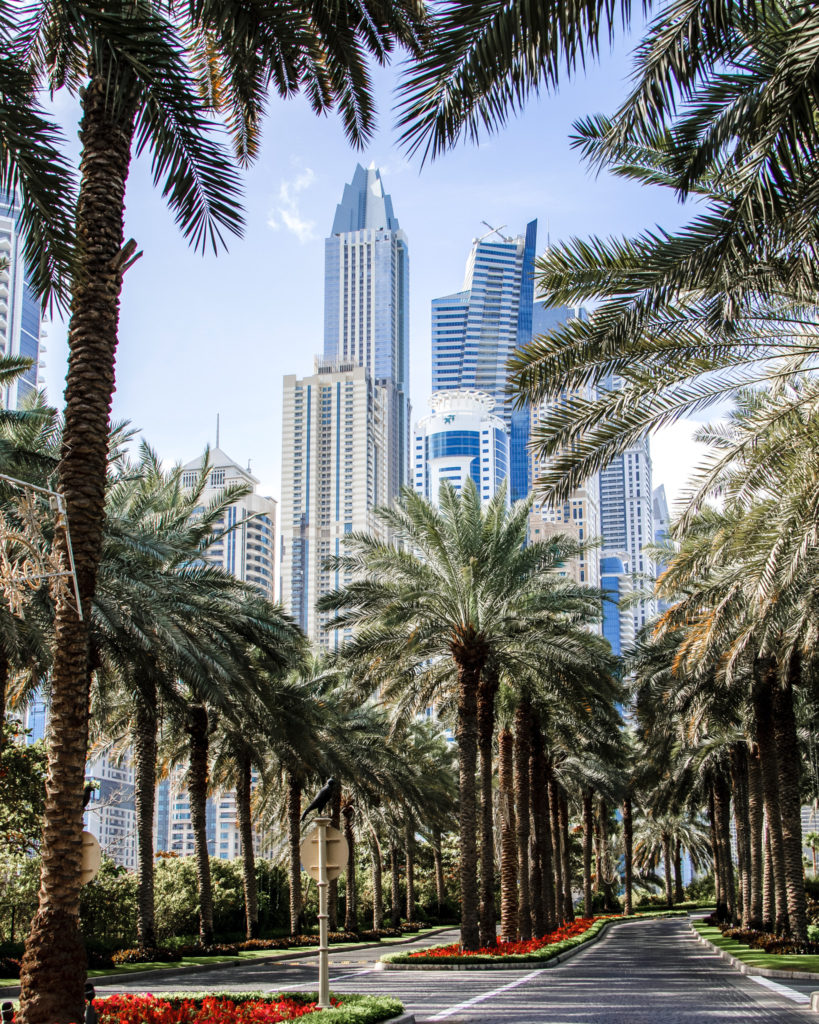
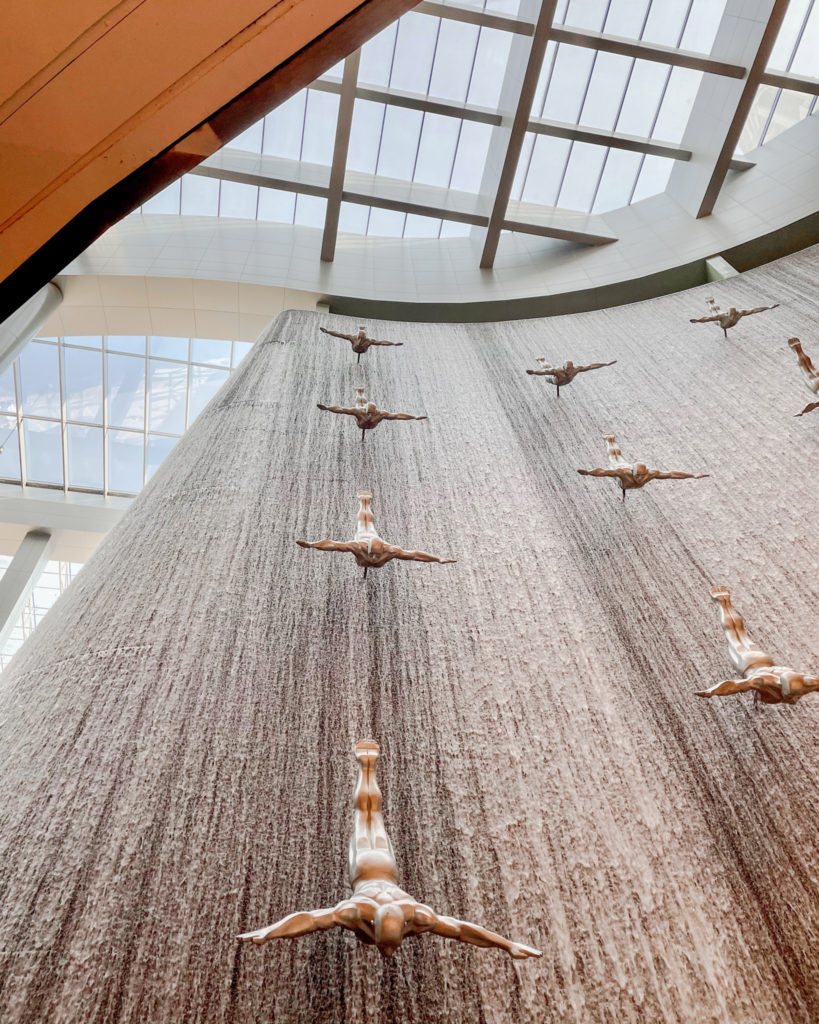
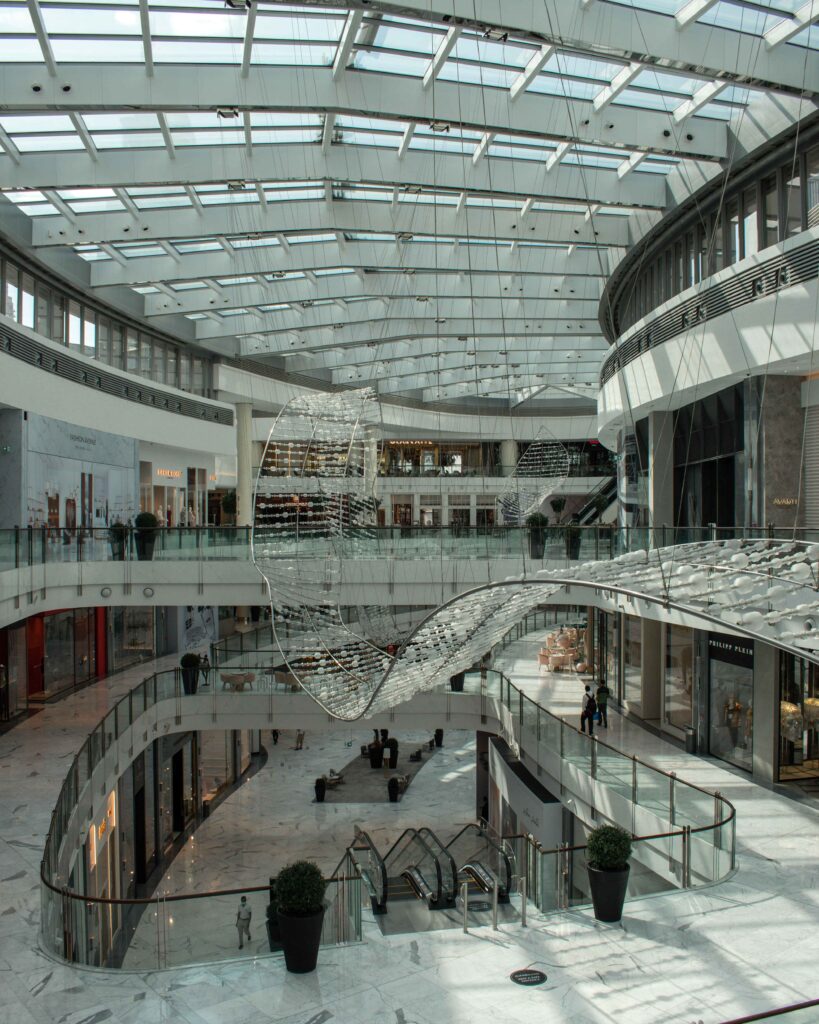
The Malls – Dubai is home to the world’s largest shopping centre – the Mall of Dubai, complete with over 1300 shops, aquarium and ice rink! Astronomically expensive designer outlets are mixed in along with more recognisable, and predominantly European, high street chains. In the summer months, the malls can also be a surprisingly good dining bet as they offer an impressive range of cuisines in air conditioned, walkable spaces.
The Waterparks – on our last trip in the middle of the summer we spent at morning trying to cool down at The Atlantis’ Aquaventure. High culture it might not be, but we had a blast! Anywhere with a 1.6km lazy river (although it is not that lazy, with waterfalls and rapids!) is good in my book. It is also a good opportunity to visit the famous Atlantis hotel, without forking out many, many hundreds of pounds to stay there.
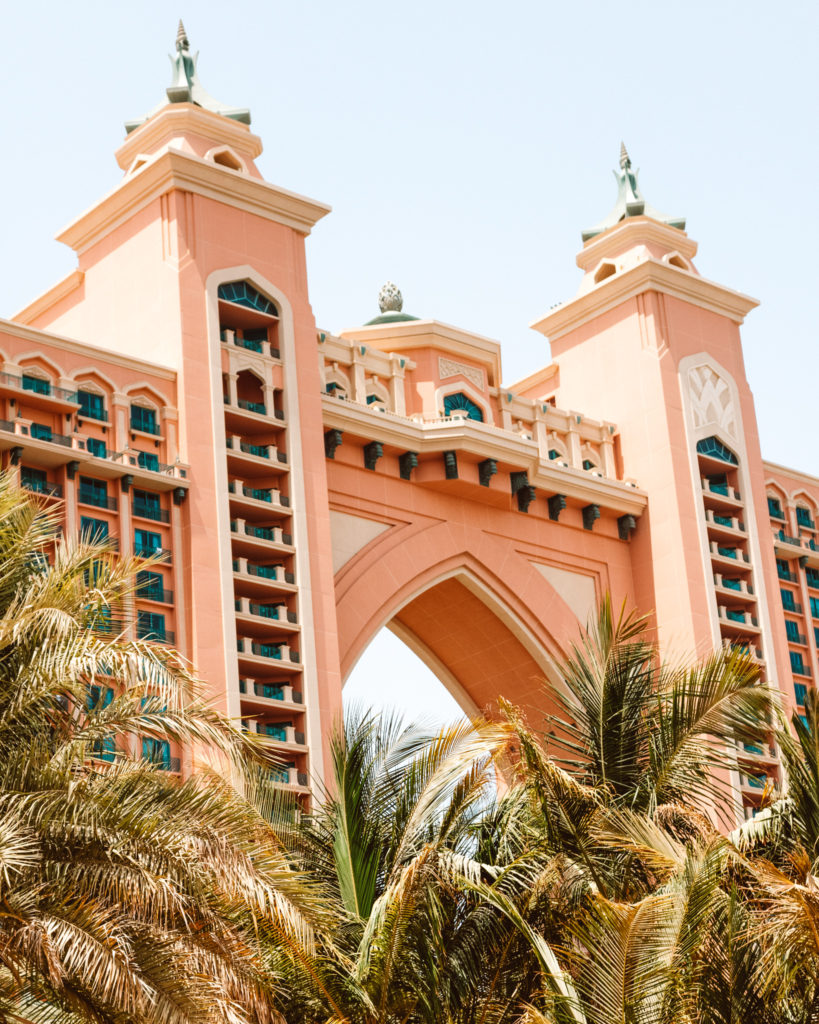
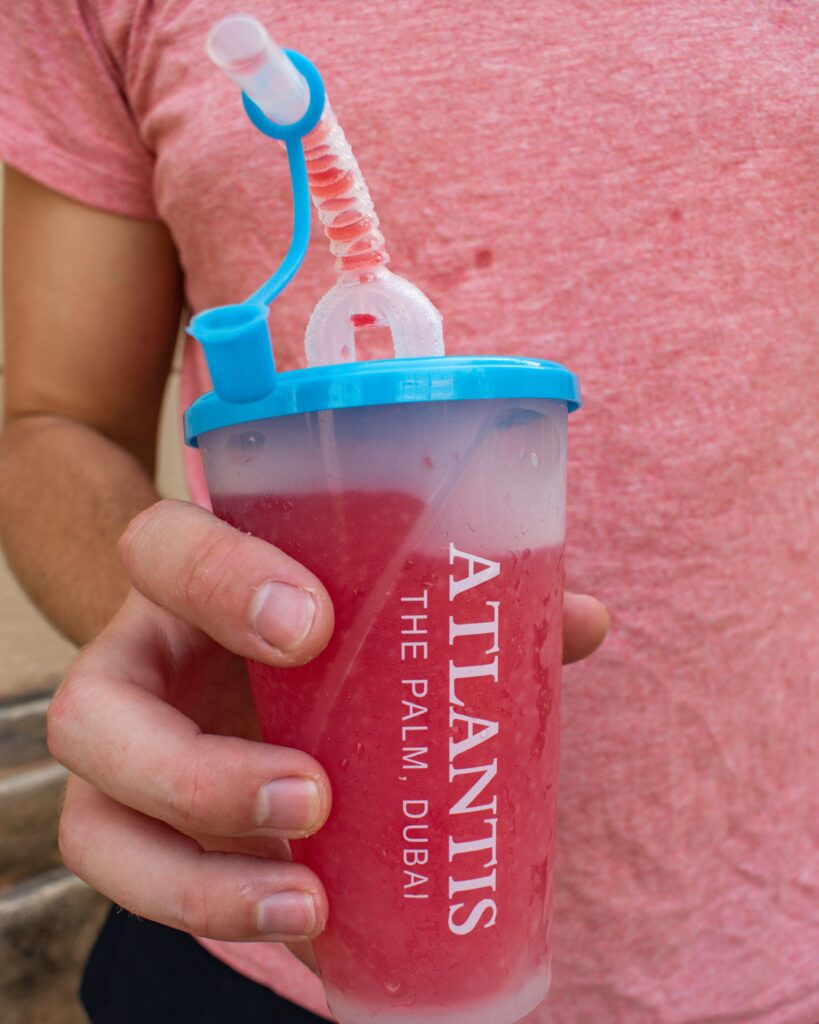
More broadly, if theme parks are your thing, Dubai has over forty to choose from. The most popular include the world’s largest indoor theme park, MG Worlds of Adventure, and the Hollywood inspired Motiongate. There is also a Legoland, but I refuse to accept anywhere can beat the original in Copenhagen!
WHAT TO DO
Take an abra across the Creek – the closest you will get to a sense of the pre-oil boom settlement. The area around the Creek was a key trading port, attracting business from across South Asia, Iran and the Indian subcontinent. The abra are wooden, open-air boats which were traditionally rowed across the creek, but are now engine-powered. A one-way trip costs just AED1 (21p), which you give to the driver in cash when you board.
Haggle in the souqs – the spice souq, gold souq and textile souq are my favourites. Nearer the entrances you will find the more touristy fare – including as many pashminas as you could ever hope to not use. But further into the labyrinthine streets you can find some real gems such as Omani frankincense and Iranian saffron… Haggle hard!
Learn about Emirati Culture – the Sheikh Mohammed Centre for Cultural Understanding (SMCCU) seeks to showcase Emirati customs and answer questions about life in the Emirates. Book a cultural meal, and you will sit down for a delicious machboos (a biryani-like rice casserole) with a local for a Q&A on all things Emirati. The meal costs 120 AED (£25). The centre also offers tours of Dubai.
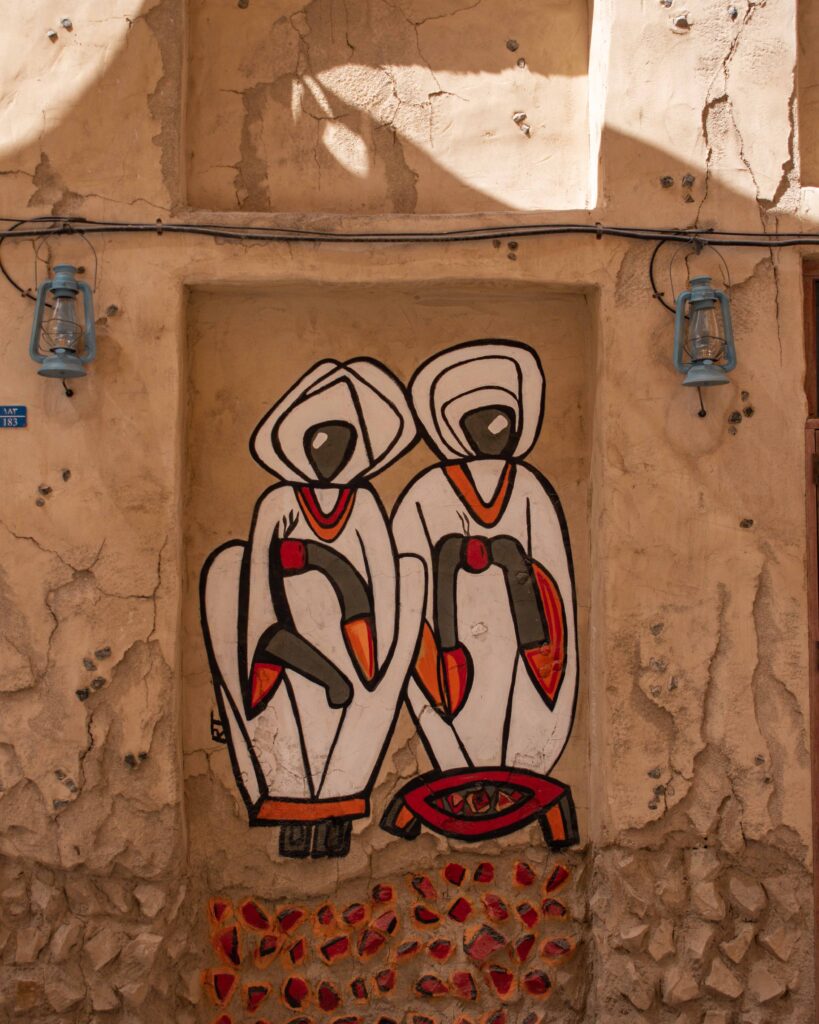
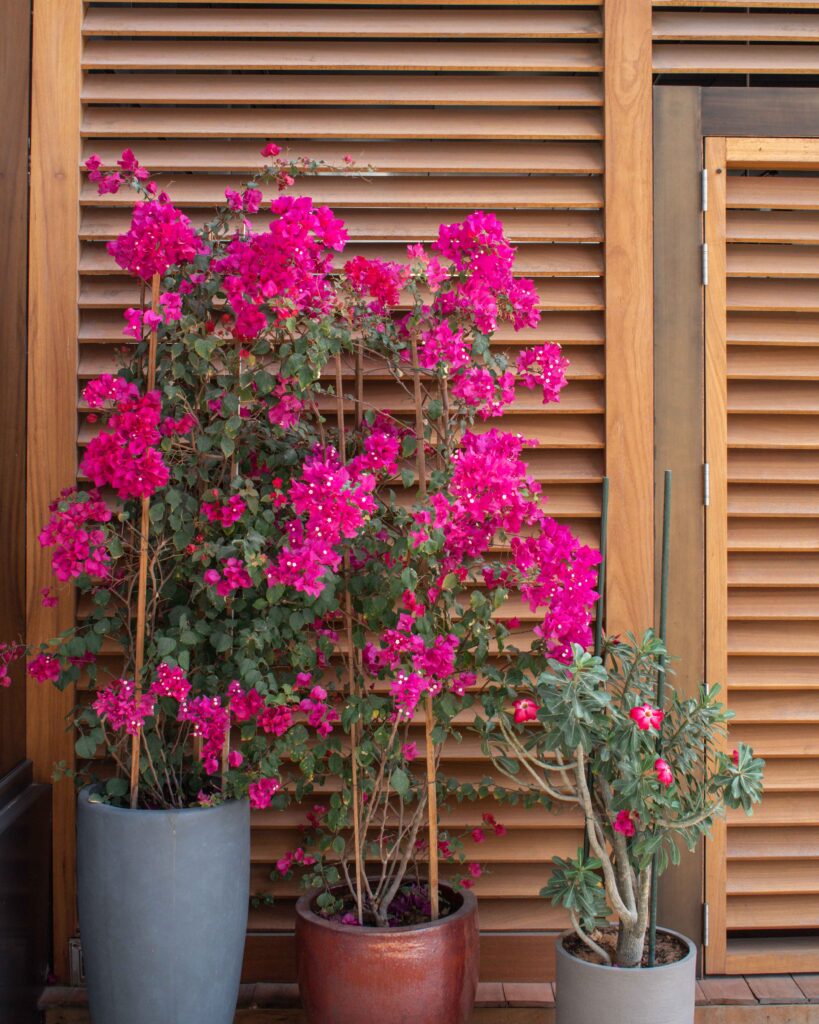
Visit the Jumeirah Grand Mosque – one of the few mosques in the UAE open to non-Muslims. Opened in 1979, it was a gift to the city from Sheikh Rashid bin Saeed Al Maktoum, father of the current ruler of Dubai. It can hold an impressive 1,500 worshippers. The mosque offers good tours in which questions about the mosque and wider Islamic life are encouraged. Tours are every day except Friday, at 10am and 2pm. No prior booking is needed, just register 30 minutes beforehand at the entrance. Tickets are 35 AED (£7) and Emirati fuala is included. The word derives from the Arabic for “good omen’ and this concept of hospitality usually includes Arabic coffee, dates and sweet treats. Visitors are asked to dress modestly – ladies should bring their own headscarf.
Back your camel! – camel racing is huge business in the UAE. Races usually take place on Fridays from 6am to 8am, from November to March. Races are free to watch and take place at the Dubai Camel Racing Club. Definitely one of my top free things to do in Dubai.
Savour some local and regional art – check out XVA, the galleries along Alserkal Avenue or the contemporary Jameel Arts Centre. There is some fantastic public art in Dubai, and even if you are not interested in the shopping a visit to the Duabi Mall is worth it to see the beautiful Human Waterfall installation. I am also a big fan of the The Declaration Sculpture, composed of interwoven Arabic calligraphy. The Dubai Frame, symbolically looking out onto Old Dubai from one side, and new Dubai from the other, has an observation deck, with a glass walkway looking down at the fountains and gardens 150 metres below. Entry is 50 AED (£10.50).
A quiet afternoon bird spotting – the Dubai Creek, a saltwater creek which runs through Dubai, comes to an end in the wetlands of the Ras al Khor Wildlife Sanctuary. The 6.2 sq km of protected salt flats, mudflats, mangroves and lagoons is home to 170 species of birds, most famously the pink flamingoes in the winter months. You will also see reefs, great egrets, cormorants, herons, black-winged shores, grey herons, and sandpipers. The wetlands are open 7:30am to 5:30pm during the winter, and 6am to 6pm between April and September. Entrance to the three viewing hides – complete with binoculars – is free.
Escape the concrete jungle – as you are walking through the gleaming high rise streets it can be hard to remember that Dubai is but a small dot in the desert. Right on the city’s doorstep is the Rub’ al Khali – more often known to English speakers as the Empty Quarter – a 650,000 sq km ocean of sand. Even if you are only here for a short layover, you must get a glimpse of the towering dunes. But it pays to pick your tour wisely. Unfortunately, adrenaline pumping “dune bashing” tours remain the most popular, but these are causing significant damage to the landscapes and wildlife of the desert. I therefore strongly recommend organising a trip with the superb Platinum Heritage. Travelling in a 1950s open-topped Land Rover (reason enough alone to book!) you head out into a nature reserve owned by the Emirati royal family, to see the UAE’s national animal – the onyx. Guides are incredibly knowledgeable and tours include a four course Emirati buffet meal, falconry displays and an introduction to Bedouin culture and traditions. Tours start from 595 AED (£122).
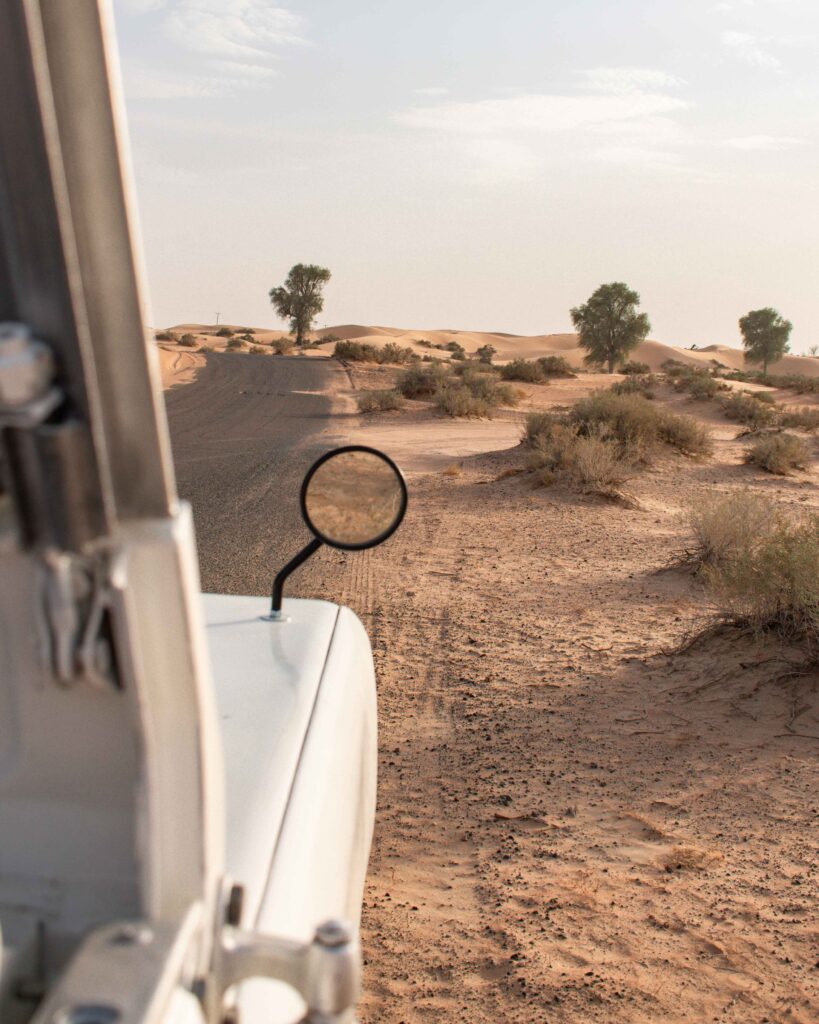
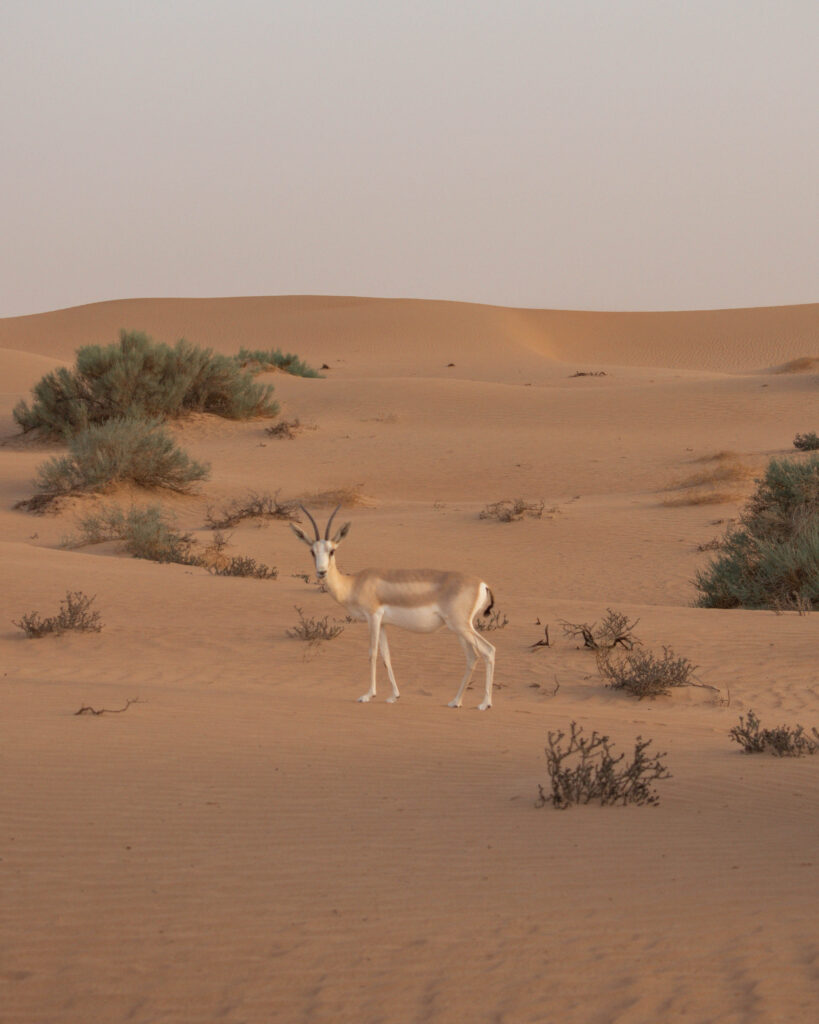
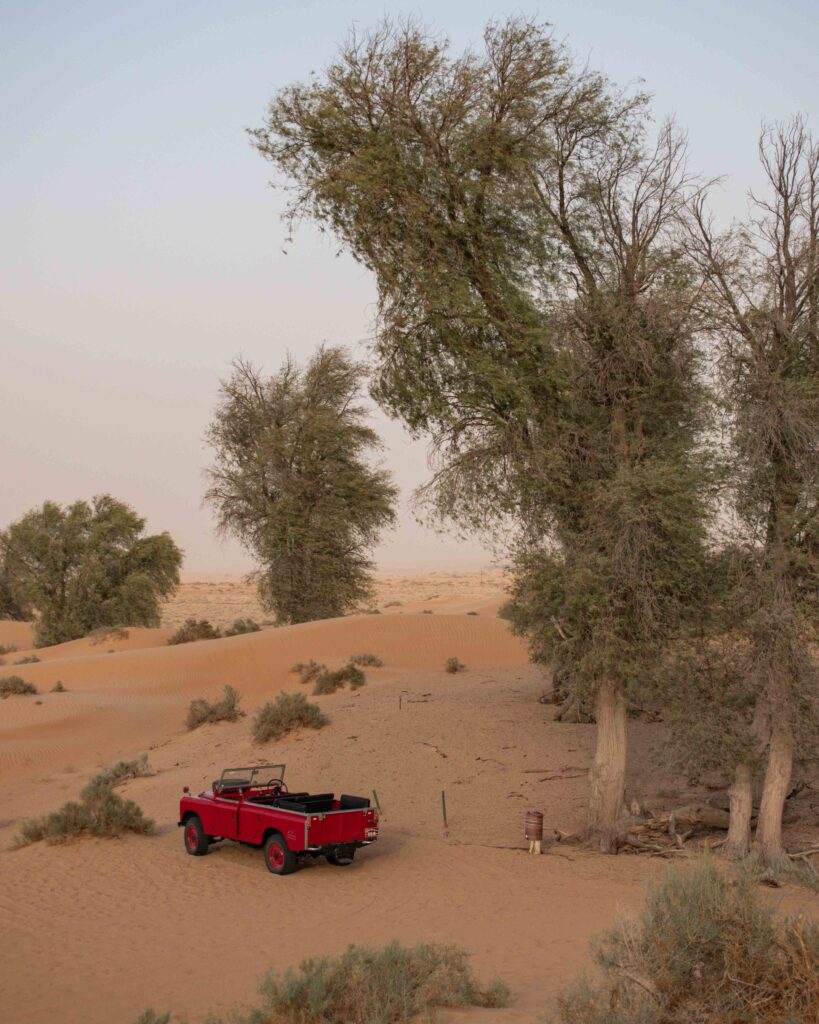
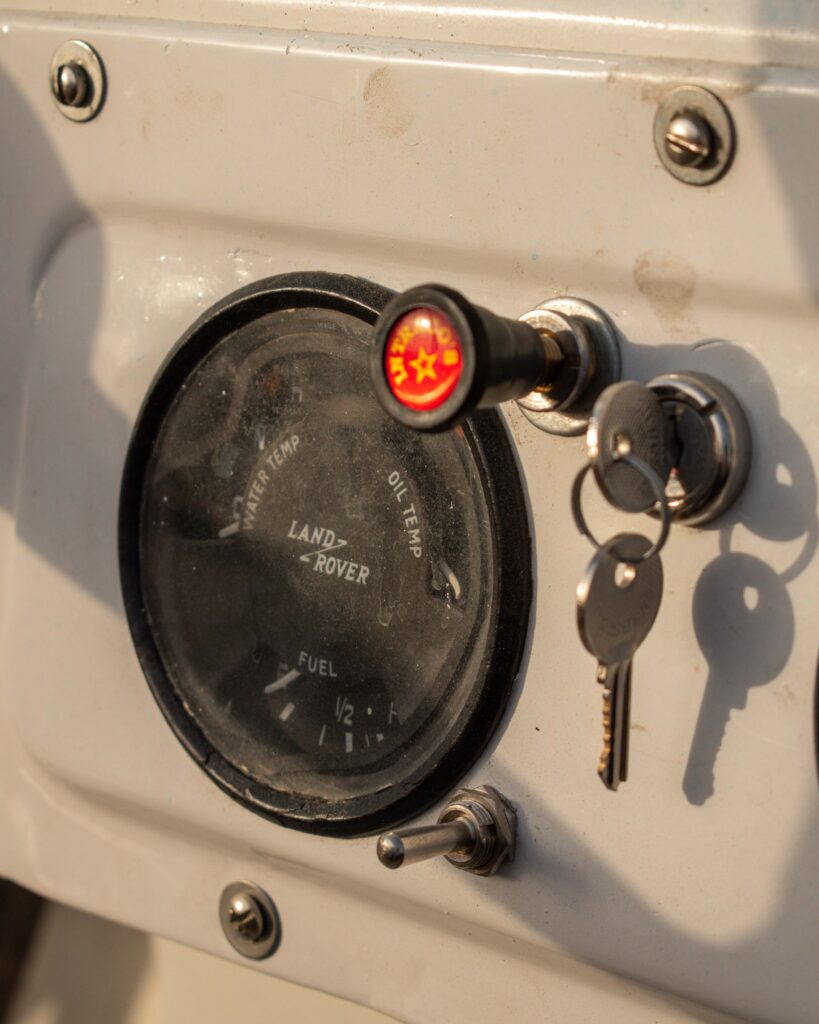
WHERE TO EAT
There are so many good restaurants and cafes in Dubai, and there are multiple, comprehensive guides available to peruse before your trip (TimeOut Dubai and Savoir Flair are two of the best places to look for recent reviews and openings). But whilst the UAE’s population is about 85% expat – mostly from India, Bangladesh, Pakistan, Egypt and the Philippines – many “best eat” lists focus on British and American cuisines. Don’t get me wrong, there is most definitely a place in your itinerary for one of the famous, extravagant and utterly fabulous Dubai brunches and there are some truly world class restaurants here. But I think it would be a shame not to make the most of the chance to sample amazing, authentic cuisines from all around the world in one place. I am not therefore going to try and replicate a list of all the best places to eat in the city – the internet already has this comprehensively covered! Instead, the below focuses on the lower key, and generally more affordable choices, that you might not find on the usual Dubai guides. My guide to my favourite places to eat in Dubai has a much more length list of suggestions.
If you are looking to explore more of Dubai’s international foodie culture, I would strongly recommend the Frying Pan Adventure tours, run by sisters Arva and Farida Ahmed. For 395 AED (£81) they offer walking tours through Bur Dubai and Deira, sampling an array of delicious cafes and tiny hole in the wall eateries you would be unlikely to find on your own.
Mirzam Chocolate – artisan chocolate maker with a factory, shop and café. They are famous for their rose hot chocolates, and also sell beautifully packaged, single-origan-bean-to-bar chocolate bars with Emirati-inspired flavours including camel milk and luqaimat. Both packaging and the chocolates themselves look like works of art. Staff are very knowledgeable and will talk you through the various options, including the Emirati-inspired flavours such as ragag, asseed and luqaimat.
Boston Lane – a pinterest dream! Cute Australian cafe perfect for a coffee date or lazy weekend breakfast. The setting in The Courtyard in Al Quoz is lovely, and in winter you can sit outside amongst the green. Inside is equally lovely, with cafe meets arty boho interior design shop. The signature cheese and garlic toastie is as epic as it sounds.
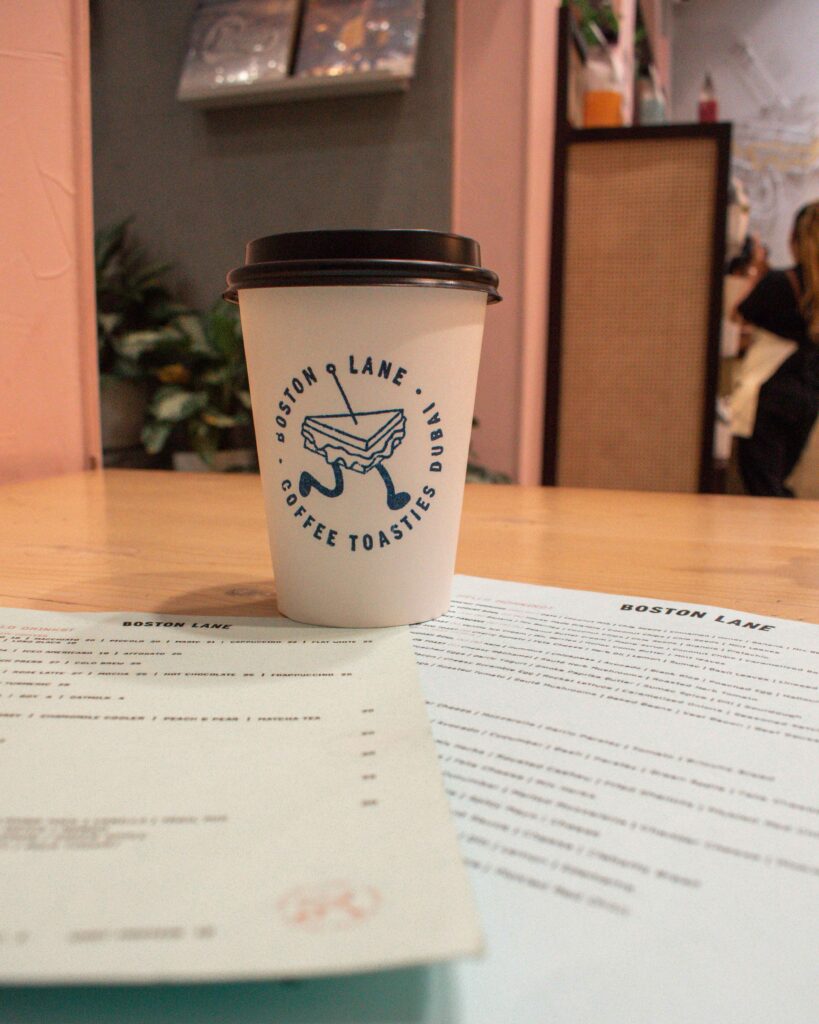
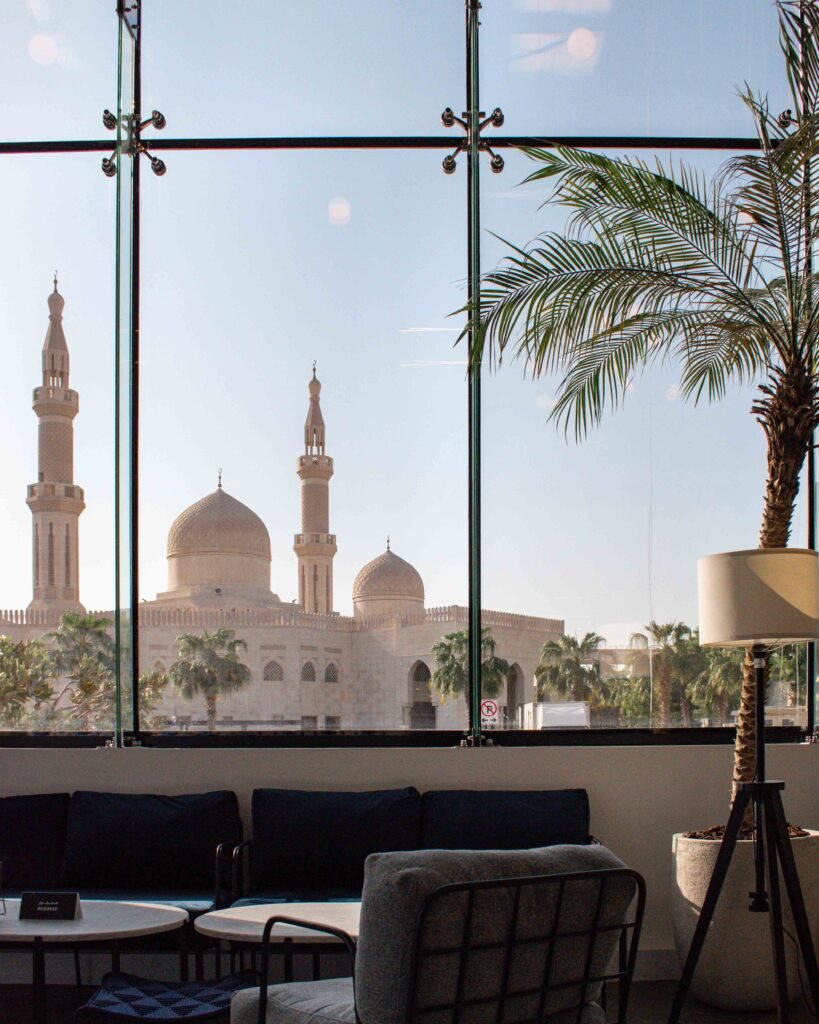
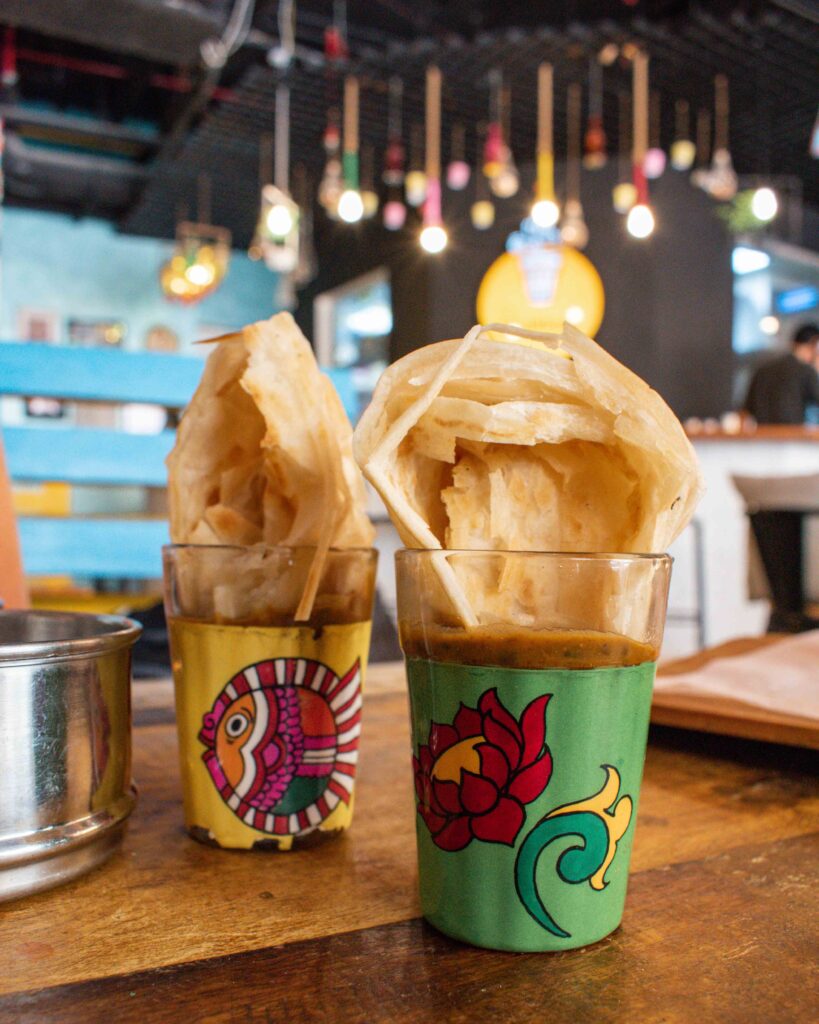
Bhukkad Café – fabulously colourful, pop art filled café serving excellent Indian street food. The humorous tone of the menu really sets the scene for a fun dining experience. Portions are generous – we had four plates between two, and couldn’t finish everything – making it a very good value option. Get the vada pav – so spicy, and so soft – and the chilli paneer was an unexpected favourite.
Bu Qtair – no menu and no glitz, just good seafood. Choose your fish from that day’s catch, and have it served simply with a spicy sauce and rice. Prawns are sold by the kilo.
Little Lamb Hotpot – if you have read my guide to Xi’An, you will know that I love hotpot! And this is good hot pot! Marina Beach has the most vibe.
Wokyo – friendly, casual noodle bar. Good variety and very yummy noodles. The vibe is Japanese street food, with string fairy lights, wooden benches and paper lanterns.
WHERE TO STAY
As with where to eat and drink, there are many, many reviews and summaries out there of the best – and most over the top – places to stay in Dubai. So hopefully this will give you an idea of the more boutique, and characterful, options.
XVA Art Hotel – more of a boutique, guesthouse and art gallery than hotel. There are only 13 bedrooms in the heart of the tranquil old Bastakiya quarter, all decorated by a different local designer. Onsite is also a highly acclaimed art gallery and a design shop, three shaded courtyards, a wonderful vegetarian café – all of which are worth visiting even if you aren’t staying. Rooms are air-conditioned, but given the handmade nature of the doors the seals are not complete. Although there are also ceiling fans, in the summer months the rooms may get a bit stuffy. Check out my fuller review here.
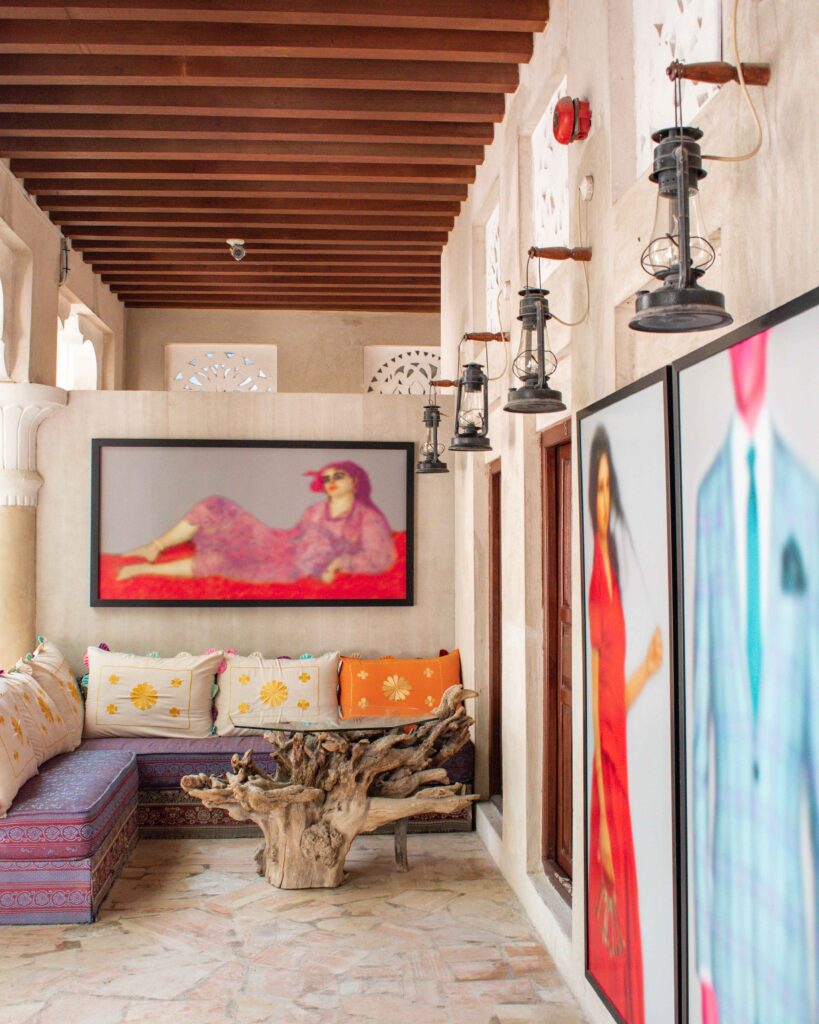
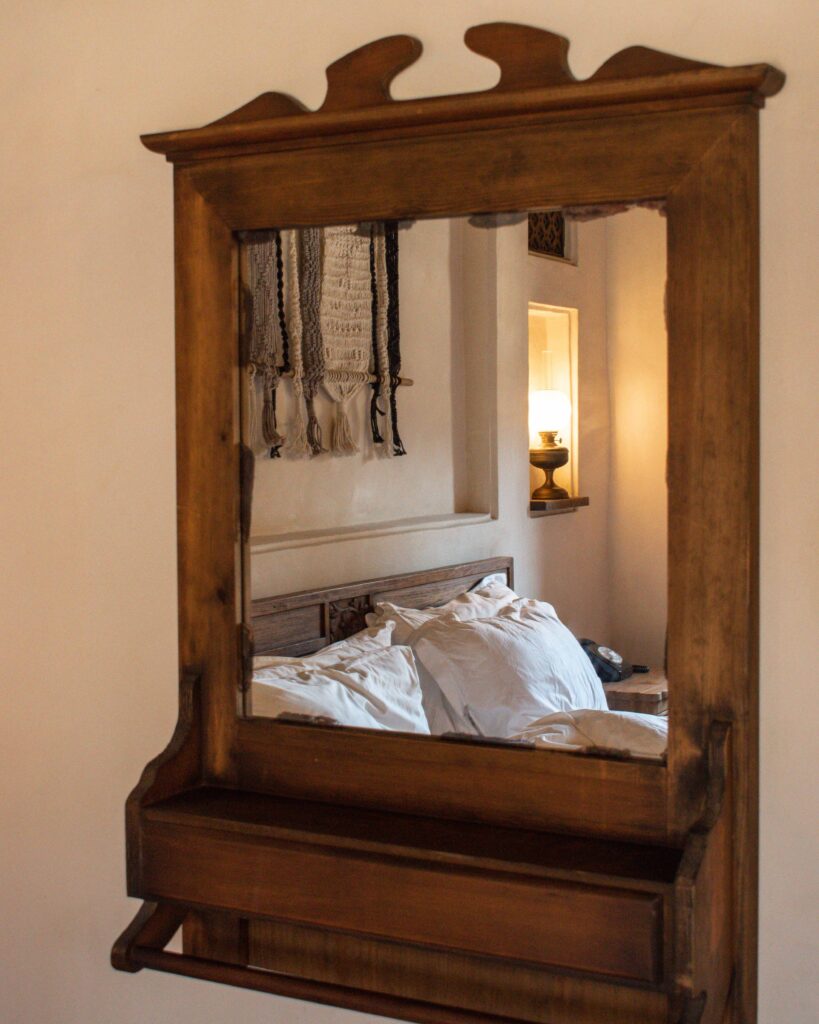
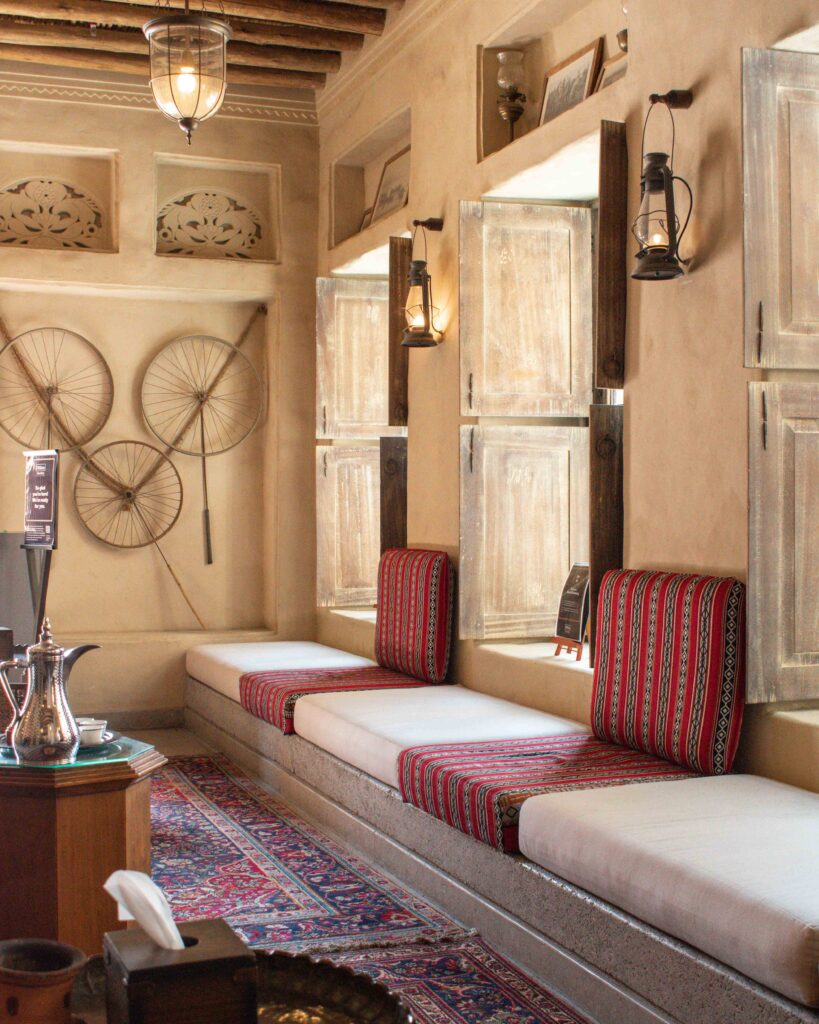
Al Seef Historic Hotel – beautifully embroidered floor cushions, intricately carved wooden chests and walls adorned with photographs showing Dubai in the 1900s make it feel as though you have stepped onto a film set. The faux-historic setting doesn’t mean you need to scrimp on modern amenities – Nespresso machines are hidden behind the beautifully carved wooden boxes! The plush beds are very comfortable, with super high quality thick, cotton sheets. Some rooms can be noisy, as the hotel is spread out amongst the shops of the faux-souq below. Guests have access to the pools and gyms at modern sister hotels, Canopy by Hilton Dubai Al Seef and Hampton by Hilton Dubai Al Seef, a five-minute shuttle ride away. Al Seef is not an authentically historic option like XVA, but is a bit more luxurious. Check out my fuller review here.
Rove Downtown – slightly different to the other central Dubai offerings, top floor rooms of this super quirky hotel opposite the Dubai Mall have views of the Burj al Khalifa. One of the best affordable hotels in the city. Expect stencilled walls, bright colours and artworks from around the world. Bedrooms are spacious and comfortable, although slightly lacking some of the character of the rest of the hotel. The small outdoor pool offers a secluded spot to float around in the shadow of the world’s tallest building! Rove even has its own boutique cinema.
Hopefully this has given you a taste for what Dubai can offer. Have a look at my other guides to the United Arab Emirates and the wider Middle East if you are looking for more regional travel inspiration.




Leave a Reply